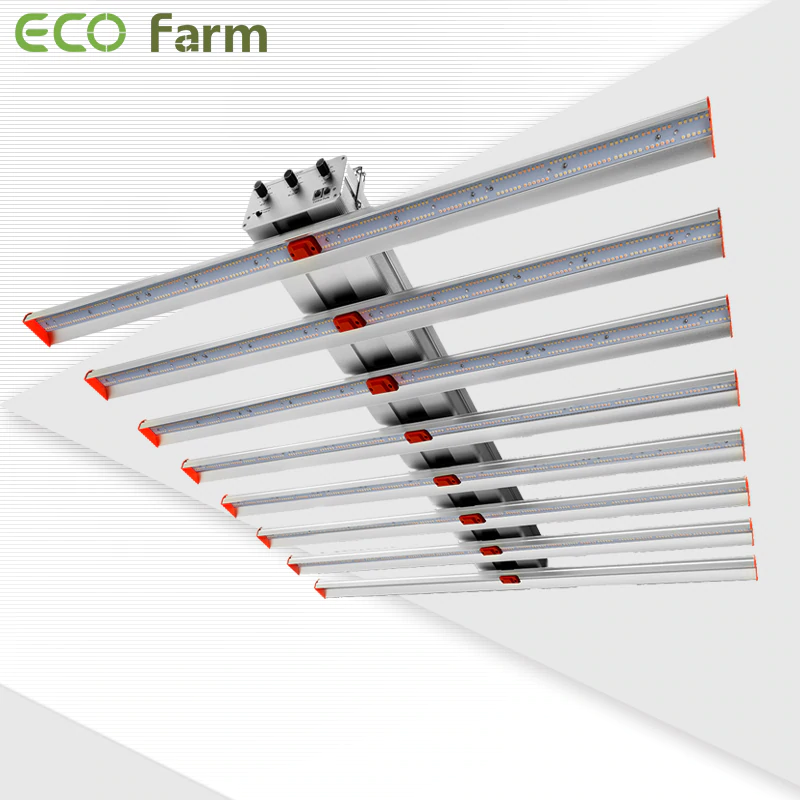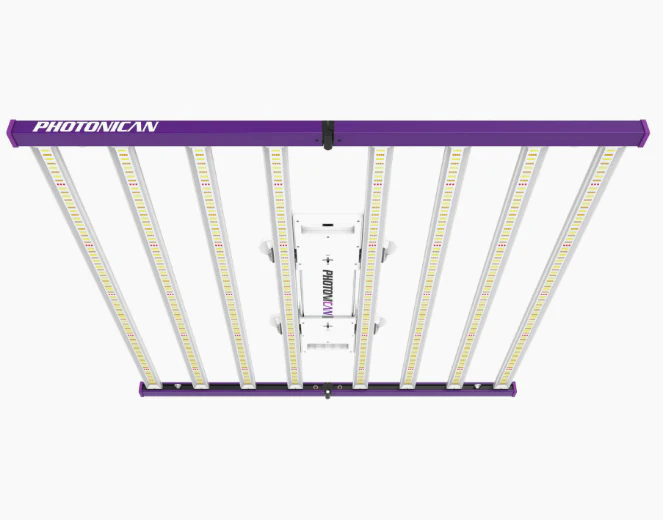- Home
- SHOP ECO FARM
-
TOP BRANDS
-
Grow Lights Brands
- Adjust-A-Wing
- Apollo Horticulture
- Bestva
- Black Dog LED
- California Lightworks
- ChilLED Grow Light
- Eco Farm
- HLG - Horticulture Lighting Group
- Kingled
- Kind LED
- Mars Hydro
- Morsen
- Neilo
- NextLight
- Phlizon
- PlatinumLed
- Roleadro
- Optic LED Grow Lights
- ViparSpectra
- Vivosun
- EYE Hortilux
- IPOWER
- NanoLux
- Phantom grow light
- Gavita grow lights
- Grower's Choice
- Lumatek
- Maxibright
- Yearld Pro
- ThinkGrow
- Crecer Lighting
- Green Sunshine Electric Sky
- fohse aries
- loriflux
- luxx
- fluence
- iluminar
- Lex
- LTC
- Rayonled
- FGI
- PHOTONTEK
- Grow Tents & Kits Brands
- Extraction & Harvest Brands
- Climate Control & Hydroponic Brands
-
Grow Lights Brands
- COMPANY INFO
- COOPERATE WITH US
- Blog
- Sign in
- Home
-
SHOP ECO FARM
- ECO Farm Grow Lights
- ECO Farm LED Grow Lights
- ECO Farm Quantum Board
- ECO Farm Samsung LED Grow Lights
- ECO Farm COB Grow Lights
- ECO Farm Commercial Lights
- ECO Farm Supplemental Grow Light
- ECO Farm Fluorescent grow lights
- ECO Farm HPS & MH Grow Lights
- ECO Farm CMH Grow Lights
- ECO Farm HID/CMH Bulbs & Ballasts
- ECO Farm Grow Tents & Kits
- ECO Farm 2x2ft Grow Kits
- ECO Farm 3x3ft Grow Kits
- ECO Farm 3.3x3.3ft Grow Kits
- ECO Farm 4x4ft Grow Kits
- ECO Farm 5x5ft Grow Kits
- ECO Farm Grow Tent - Standard Style
- ECO Farm Grow Tent - Extension & Roof & Lodge Style
- ECO Farm Extraction & Harvest
- ECO Farm Rosin Press Machine
- ECO Farm Dry & Wet Trimmers
- ECO Farm Oil Accessories
- ECO Farm Medicinal Plants Grinder
- ECO Farm Medicinal Plants Containers
- ECO Farm Medicinal Plants Dryer
- ECO Farm Refrigeration Dryer
- ECO Farm Climate Control & Other Accessories
- ECO Farm Inline Duct Fans
- ECO Farm Oscillating Fans
- ECO Farm Exhaust Fans
- ECO Farm Air Filter
- ECO Farm Duct Muffler
- ECO Farm Ventilation Kits
- ECO Farm Plant Humidifiers
- ECO Farm Plant Dehumidifiers
- ECO Farm Hydroponic Accessories
- ECO Farm Other Accessories
- ECO Farm Hydroponics Microscopes
-
TOP BRANDS
- Grow Lights Brands
- Adjust-A-Wing
- Apollo Horticulture
- Bestva
- Black Dog LED
- California Lightworks
- ChilLED Grow Light
- Eco Farm
- HLG - Horticulture Lighting Group
- Kingled
- Kind LED
- Mars Hydro
- Morsen
- Neilo
- NextLight
- Phlizon
- PlatinumLed
- Roleadro
- Optic LED Grow Lights
- ViparSpectra
- Vivosun
- EYE Hortilux
- IPOWER
- NanoLux
- Phantom grow light
- Gavita grow lights
- Grower's Choice
- Lumatek
- Maxibright
- Yearld Pro
- ThinkGrow
- Crecer Lighting
- Green Sunshine Electric Sky
- fohse aries
- loriflux
- luxx
- fluence
- iluminar
- Lex
- LTC
- Rayonled
- FGI
- PHOTONTEK
- Grow Tents & Kits Brands
- Apollo Horticulture
- Black Box
- CoolGrows
- Eco Farm
- GrowLab
- Gorilla Grow Tents
- Mars Hydro
- Quictent
- Secret Jardin
- Unit Farm
- TopoGrow
- VIVOSUN
- Topolite
-
COMPANY INFO
-
COOPERATE WITH US
- Blog
ECO Farm ECOZ PRO 700W Samsung 301H Chips LED Grow Light VS Photonican Aurora 2000 680W LED Grow Light
July 29, 2022
Agriculture has fast evolved through the years, and indoor grow tent has soon become a popular trend in the industry. The need to grow plants this way has led to the birth of outstanding grow light innovations to meet the basic growth requirements of plants.
The LED grow light is one of such innovations that has undoubtedly helped to improve plant development and shorten plants’ growth cycles in the greenhouse.
This article will help you choose the best grow lights for your grow tent and show you what factors you need to put in place to improve the growth of your plants.
Why Grow Lights over Sunlight?
Grow lights are a better option than sunlight for several reasons.
Sunlight is only available during certain times of the day, and it can be challenging to find a location that receives enough sunlight for your plants. Due to changes in weather conditions, the photosynthesis of plants affects.
We can use Grow lights year-round. The main difference between Grow light and sunlight is that Grow light emits a specific wavelength of light that is beneficial for plants, while sunlight contains all wavelengths of light. This means that We can use Grow light to grow plants indoors, even when it’s cloudy outside.
Grow lights can be placed closer to the plants, which allows for more intense light and fewer shadows.
In addition, grow lights can be used in any location, regardless of outside weather conditions.
Further, some research studies proved that using grow lights increased fresh weight, the number of leaves, and plant height.
ECO Farm ECOZ PRO 700W Samsung 301H Chips LED Grow Light

Features:
The ECO Farm LED grow light with unique designed extended 8 bars LED grow light provides more even and full canopy coverage, especially to the outer edges cultivation areas. With 2784pcs SAMSUNG LM301H& Os-ram Chip, This Led grow lights draw 700 watts with 1960 umol/s, achieving an impressive PPE of 2.85 umol/J, coverage for 4’x4’ of high-yielding full-cycle growth. Full-spectrum is perfect for veg to bloom, to adapt to each phase of the plant cycle. The dimming knob is ideal for growers to adjust the light intensity according to different growing stages. Bar grow light design and aluminum heat sink on the back contribute to better airflow and great heat dissipation. This plant-growing light comes with a detachable driver and long power cord, by reducing ambient heat in your growing space for an extended lifespan. With the waterproof coating on the LED diodes, worry-free of the moist environment.
Photonican Aurora 2000 680W LED Grow Light

Features:
The Aurora 2000 is a full-spectrum output luminaire that provides consistent energy savings while also delivering an ultra-high red output. The Aurora 2000 is a full spectrum output luminaire that delivers consistent, energy-efficient results. At the same time, it provides ultra-high red output in spectral performance. A 30% increase in red results in better crop quality, higher yields and an increased cycle of the year. Equipped with 8 passively cooled 6063 aerospace-grade aluminium LED strips, the Aurora 2000 provides high-intensity light distribution and uniformity, remarkable PPFD readings compared to other similar luminaires. High PPFD is used in combination with CO2 to maximize plant potential.
Buying Guide For LED Grow Light
As the name suggests, LED grow lights utilizes modern LED chips in a fashion that introduces suitable growing light for plants. The quality obtained from different LED grow lights are different and that in turn affects the growth and sustainability of the plant. If you are going to set up an indoor growing platform, you should go through our top picks for the best LED grow lights.
These options are shortlisted from hundreds of different choices based on various crucial factors such as light intensity, panel size and overall quality of the LED grow light. Although, you should still consider the following mentioned properties briefly to understand their virtue regarding different types of applications. After going through our buying guide for the best LED grow light, we can assure you that you will be able to pick up the best option for yourself.
The Intensity of LED Lights
As we mentioned earlier, the intensity of light produced by the LED lights is one of the most crucial factors and directly affects the quality of plants growing in the light. As different types of plants have varying photon requirements, you need to select the correct intensity of light over the plants. For best results, you should choose a high capacity LED grow light that can be dimmed as per requirement.
LED Light Spectrum
The spectrum of LED lights refers to the different wavelengths of light produced by the LED. Different spectrums of light must be fed to the plants in different growing stages. In case you want to use the same LED grow light for different types of growth stages, you should go with a full-spectrum option. Otherwise, you can select between single spectrum panels suitable for the single application.
Coverage Area
The coverage area of LED panels represents the area that can be illuminated by the panel at once. To put in simpler words, the area of the plantation unit must be equal to or smaller than the coverage area of the LED grow light for optimum results. If a part of your plantation platform is outside the illuminated area, it will cause non-uniform growth of the plant that will also affect the whole plant. You can also install certain lenses to increase or decrease the coverage area of your LED grow light.
Warranty
Lastly, we will recommend you to take a closer look at the warranty period allotted by the brand for the given LED grow lights. The LED lights can fail at any time on the panel and you cannot simply replace a single LED from the section. As buying a heavy-duty LED grow light is quite expensive, you should always opt-in for a longer warranty period. Thus, you will get full assurance from the manufacturer about the durability of the panel as well as LED lights.
Conclusion
Grow lights are an essential part of a healthy hydroponic garden.
When choosing a grow light, it is crucial to consider the specific needs of your plants. Some factors you may want to consider are the type of plant, the stage of growth the plant is in, the amount of light the plant needs, and the amount of space you have available to grow the plants.
Also in Indoor Grow LED Grow Light
HLG Greenhouse Pro HE HV 630W LED Grow Light VS Geeklight grow light 480W hydroponic led grow light
October 20, 2023
